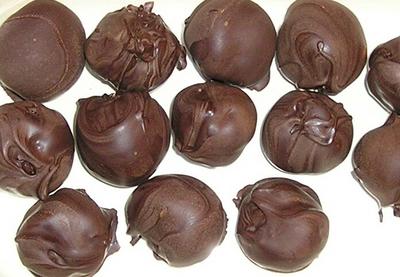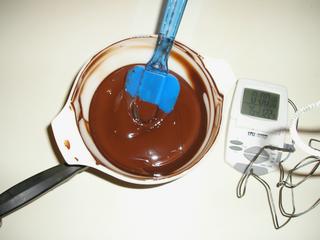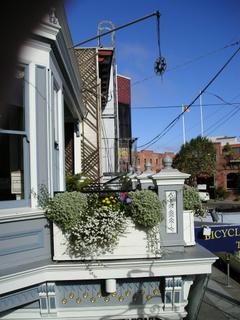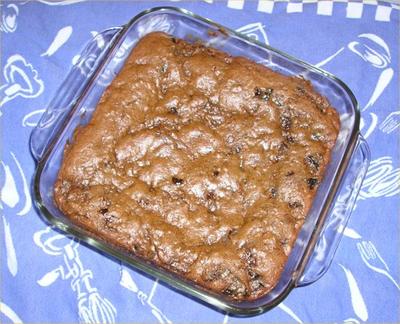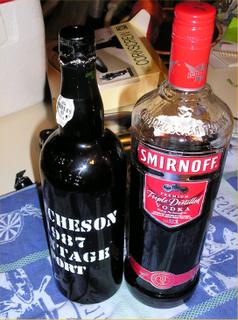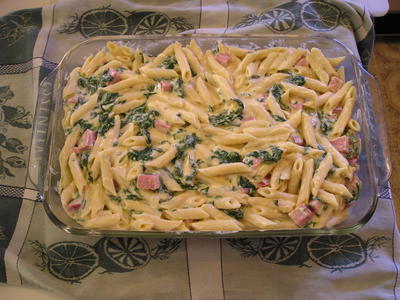I'm It
I have been tagged. With a meme. I should say before I get all long winded (which means that I should have said it thirty years ago, but there's no use crying over spilled polenta) that I was pleased to be tagged and especially pleased to be tagged with something that was easy to do, requiring only a bit of counting, cutting, pasting, and yammering (at which I am especially skilled, don't you know). There are some memes floating around out there that would require real work. I appreciate Lindy's thoughtfulness both in tagging me and in tagging me with something easy.
The concept of memes is a useful, if somewhat vague, concept. The word "meme" itself, however, is unfortunate (it's like, ooooh, me! me!, or Mimi, except that it's not pronounced that way, as far as I can tell, and I take its monosyllability as a direct affront to Mimi Smartypants, who is, clearly, a goddess). Since I've determined to start by deconstructing (and I apologize to any of you pomo readers out there who understand what deconstruction really is; I'm using the word loosely, and you can't stop me) "tagged with a meme," and since I hate "meme" , we are left only with "tag" to talk about. So let's start out with a definition of tag, as lifted from some online dictionary or other.
Having posted that arguably useful and inarguably lengthy definition, I find that I have little else to say about "tag" or "tagged" except that, as is so often the case, the meaning of "tagged" in this instance probably falls between two or more of the above transitive verb definitions.
The specific instructions for the meme with which I have been tagged:
1. Delve into your blog archive.
2. Find your 23rd post (or closest to).
3. Find the fifth sentence(or closest to).
4. Post the text of the sentence in your blog, along with these instructions. Ponder it for meaning, subtext, or hidden agendas....
Now, really, have you ever seen anything so clearly hoping to inspire Proustian meditation? Proustian meditation (aka rambling) is, of course, a good thing; it's just that it already takes next to nothing to send me off on a stream of consciousness that flows into a river of hot air (and mixed metaphors; the River of Mixed Metaphors being the local equivalent of the Island of Misfit Toys), so it would have been sufficient to start a meme along the lines of:
1. Madeleines.
2. Discuss.
I am, after all, partial to madeleines. I have no fewer than three madeleine molds, none of which appears to have disappeared in the great springform pan rapture of 2005. I use Julia Child's recipe, which is basically a genoise flavored with browned butter. It is not unlike the batter that the aforementioned Lindy uses for her financiers, for which, sadly, I have no molds at all. I would get some, but V. would not be amused.
But since this meme is a madeleine-free zone, I will cut that particular discussion short by approximately two orders of magnitude and get on with the task at hand. I had hoped that the fifth sentence of my twenty-third post (Did I say that I was actually going to get right to the topic at hand? Did you believe me? Surely not. I could not help thinking, as I typed that last pre-parenthetical sentence, of the twenty-third Psalm, the fifth sentence/verse of which is "Thou preparest a table before me in the presence of mine enemies: thou anointest my head with oil; my cup runneth over," and how appropriate is that for a food blogger?. Not that I have any enemies, of course.) would be somewhat longer; nonetheless, it seems entirely representative to me:
You see in that sentence my inability to stay with a single thought, my lack of organization, both in the form of the sentence and as its subject matter, and my eternal struggle with using "that" inappropriately. Every time I see that I've used "that" without the noun that should follow it, I think back to my senior year in college, and my Dickens seminar, and the rough draft of my fifteen-page paper on the usage of bird imagery in several of Dickens' novels (I am, of course, not obsessive enough to remember exactly which novels I discussed twenty years ago, but if I were to say David Copperfield, Bleak House, and Our Mutual Friend, I would likely be entirely correct), and how Professor Tayler, having already suggested that I might want to consider organizing my very intelligent observations so that someone might actually be able to understand them, wrote "what?" where I had used "that" incorrectly, and I am traumatized all over again, even though I didn't make that mistake in the final version, which earned me probably the most well-deserved A of my academic career.
You see in my 23rd/5th sentence both how I cook and how I write. With abandon, but, ultimately, originally and pleasingly. I might start making dinner without all the ingredients, or I might change the ingredients midway through, and I might not bother with editing, but I eventually get to where I was headed, and, when I don't, I still get to somewhere that I'm happy to be.
The concept of memes is a useful, if somewhat vague, concept. The word "meme" itself, however, is unfortunate (it's like, ooooh, me! me!, or Mimi, except that it's not pronounced that way, as far as I can tell, and I take its monosyllability as a direct affront to Mimi Smartypants, who is, clearly, a goddess). Since I've determined to start by deconstructing (and I apologize to any of you pomo readers out there who understand what deconstruction really is; I'm using the word loosely, and you can't stop me) "tagged with a meme," and since I hate "meme" , we are left only with "tag" to talk about. So let's start out with a definition of tag, as lifted from some online dictionary or other.
tag1
n.
A strip of leather, paper, metal, or plastic attached to something or hung from a wearer's neck to identify, classify, or label: sale tags on all coats and dresses.
The plastic or metal tip at the end of a shoelace.
The contrastingly colored tip of an animal's tail.
Sports. A bright piece of feather, floss, or tinsel surrounding the shank of the hook on a fishing fly.
A dirty, matted lock of wool.
A loose lock of hair.
A rag; a tatter.
A small, loose fragment: I heard only tags and snippets of what was being said.
An ornamental flourish, especially at the end of a signature.
A designation or an epithet, especially an unwelcome one: He did not take kindly to the tag of pauper.
A brief quotation used in a discourse to give it an air of erudition or authority: Shakespearean tags.
A cliché, saw, or similar short, conventional idea used to embellish a discourse: These tags of wit and wisdom bore me.
The refrain or last lines of a song or poem.
The closing lines of a speech in a play; a cue.
Computer Science.
A label assigned to identify data in memory.
A sequence of characters in a markup language used to provide information, such as formatting specifications, about a document.
Slang. A graffito featuring a word or words, especially the author's name, rather than a picture: “Instead of a cursive linear tag, Super Kool painted his name along the exterior of a subway car in huge block pink and yellow letters” (Eric Scigliano).
v. tagged, tag·ging, tags
v. tr.
To label, identify, or recognize with or as if with a tag: I tagged him as a loser.
To put a ticket on (a motor vehicle) for a traffic or parking violation.
To charge with a crime: The suspect was tagged for arson.
To add as an appendage to: tagged an extra paragraph on the letter.
To follow closely: Excited children tagged the circus parade to the end of its route.
To cut the tags from (sheep).
To add a taggant to: explosives that were tagged with coded microscopic bits of plastic.
To mark or vandalize (a surface) with graffiti: tagged the subway walls.
v. intr.
To follow after; accompany: tagged after me everywhere; insisted on tagging along.
Having posted that arguably useful and inarguably lengthy definition, I find that I have little else to say about "tag" or "tagged" except that, as is so often the case, the meaning of "tagged" in this instance probably falls between two or more of the above transitive verb definitions.
The specific instructions for the meme with which I have been tagged:
1. Delve into your blog archive.
2. Find your 23rd post (or closest to).
3. Find the fifth sentence(or closest to).
4. Post the text of the sentence in your blog, along with these instructions. Ponder it for meaning, subtext, or hidden agendas....
Now, really, have you ever seen anything so clearly hoping to inspire Proustian meditation? Proustian meditation (aka rambling) is, of course, a good thing; it's just that it already takes next to nothing to send me off on a stream of consciousness that flows into a river of hot air (and mixed metaphors; the River of Mixed Metaphors being the local equivalent of the Island of Misfit Toys), so it would have been sufficient to start a meme along the lines of:
1. Madeleines.
2. Discuss.
I am, after all, partial to madeleines. I have no fewer than three madeleine molds, none of which appears to have disappeared in the great springform pan rapture of 2005. I use Julia Child's recipe, which is basically a genoise flavored with browned butter. It is not unlike the batter that the aforementioned Lindy uses for her financiers, for which, sadly, I have no molds at all. I would get some, but V. would not be amused.
But since this meme is a madeleine-free zone, I will cut that particular discussion short by approximately two orders of magnitude and get on with the task at hand. I had hoped that the fifth sentence of my twenty-third post (Did I say that I was actually going to get right to the topic at hand? Did you believe me? Surely not. I could not help thinking, as I typed that last pre-parenthetical sentence, of the twenty-third Psalm, the fifth sentence/verse of which is "Thou preparest a table before me in the presence of mine enemies: thou anointest my head with oil; my cup runneth over," and how appropriate is that for a food blogger?. Not that I have any enemies, of course.) would be somewhat longer; nonetheless, it seems entirely representative to me:
Surely that, rather than my inability to make a list, is why I'm always running to the supermarket at the last minute.
You see in that sentence my inability to stay with a single thought, my lack of organization, both in the form of the sentence and as its subject matter, and my eternal struggle with using "that" inappropriately. Every time I see that I've used "that" without the noun that should follow it, I think back to my senior year in college, and my Dickens seminar, and the rough draft of my fifteen-page paper on the usage of bird imagery in several of Dickens' novels (I am, of course, not obsessive enough to remember exactly which novels I discussed twenty years ago, but if I were to say David Copperfield, Bleak House, and Our Mutual Friend, I would likely be entirely correct), and how Professor Tayler, having already suggested that I might want to consider organizing my very intelligent observations so that someone might actually be able to understand them, wrote "what?" where I had used "that" incorrectly, and I am traumatized all over again, even though I didn't make that mistake in the final version, which earned me probably the most well-deserved A of my academic career.
You see in my 23rd/5th sentence both how I cook and how I write. With abandon, but, ultimately, originally and pleasingly. I might start making dinner without all the ingredients, or I might change the ingredients midway through, and I might not bother with editing, but I eventually get to where I was headed, and, when I don't, I still get to somewhere that I'm happy to be.
